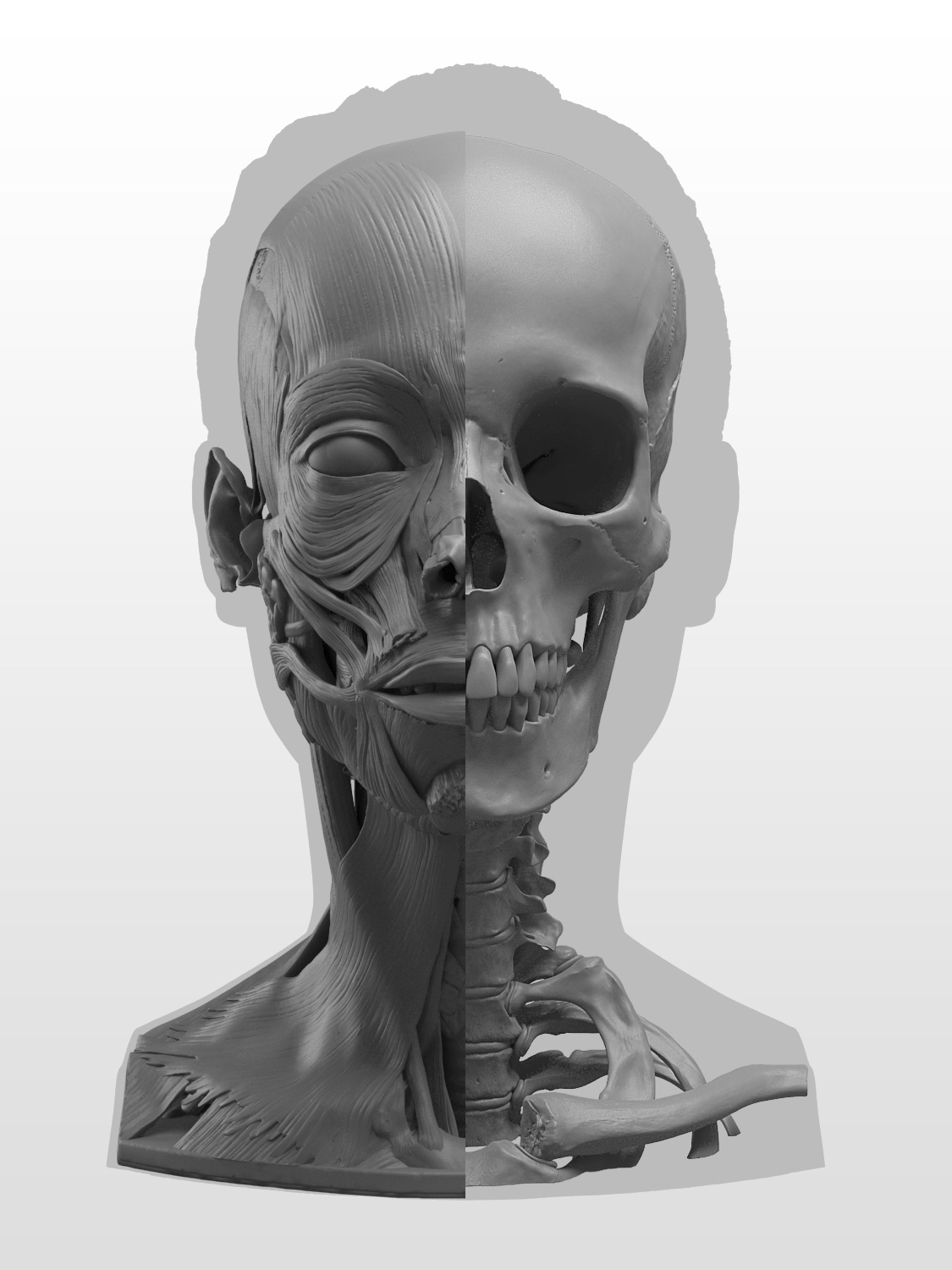ZBrushers,
You’re looking at a series of digital (soon to be physical) sculptures designed as anatomical reference for artists. The 3 sculptures were done entirely in ZBrush by New Masters Academy Cofounders Eric Michael Wilson and Joshua Jacobo with VRAY renders by Fabio Paiva.
The idea was to create a proportionally “average” female head and then reverse engineer that head to create a realistic skull and muscle layer with the proper depth cues. Our goal was to create the world’s most accurate anatomical head model which would serve as a master class for artists around the world.
For the proportional measurements we went to several anthropometric datasets and even received 3,000 scans of heads from the US CDC upon request. Once we had the measurements for the head correct we analyzed a lot of scan data. Sculpting the head in ZBrush with precise measurements was a breeze once we calibrated our transpose line to milimeters. Taking precise measurements that would be difficult or impossible in a physical sculpture was simple in ZBrush.
From there we created the skeleton of the head and neck. Again we started by analyzing real specimens and we used forensic depth cue tables to get the correct (average) depths from the flesh to the skeleton beneath in the sculptures. Some of the depths surprised us quite a bit! Again the transpose tool was critical here. When sculpting such a complex object like the skeleton we relied a lot on dynamesh and we were constantly remeshing, combining, and separating pieces in different subtools.
Finally we created the muscular layer in which we set out to get it “right.” For this we analyzed real cadavers at the University of Utah and found that many of the anatomy books were just plain off. Some areas like the nose were very difficult to find good reference on. Again subtools came to the rescue here. We started by blocking in the muscles from their origins to their insertions using…well blocks. We transposed these boxes into place then dynameshed them (which rounded them out) and began to shape them properly. One the masses were correct adding the precise striations and other muscular details was quick work with simple tools like the standard brush. We did create a few custom alphas for the job but most of the work was done one stroke at a time.
Overall this project was as much about research and the technical end as it was “artistic” but we’re very pleased with the results. There’s two ways that you can get access to this model:
- We have a real-time version of the model at the New Masters Academy website which you can access right from your browser
- We are working on physical resin versions based on 3-D prints.
We’re always open to criticism and suggestions so if you see something that you think is wrong let us know!
Joshua Jacobo
Cofounder
New Masters Academy
Attachments




